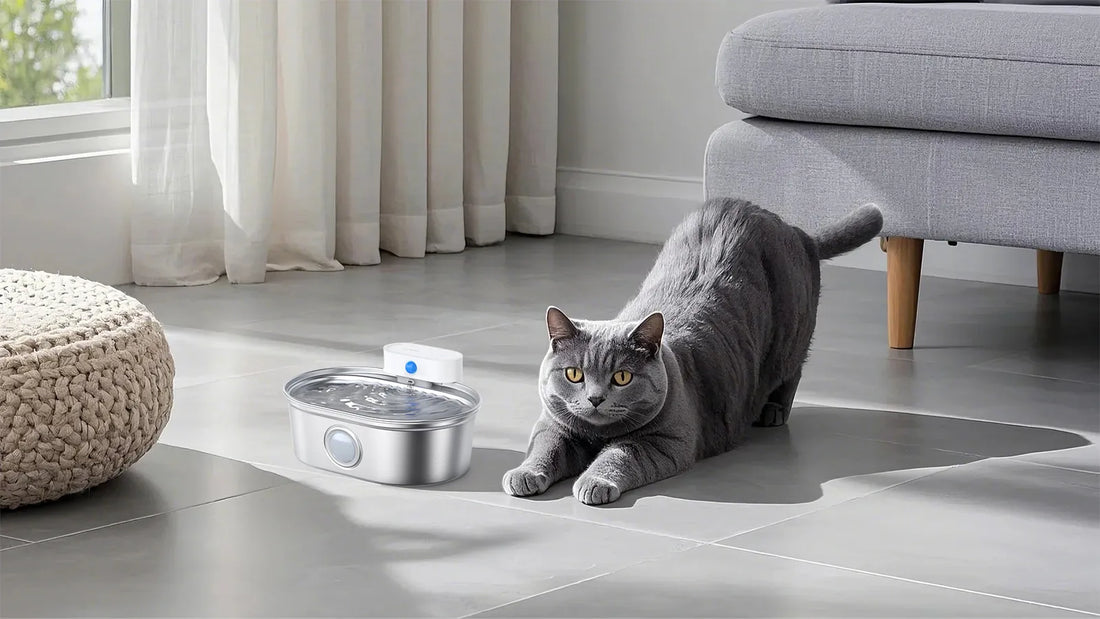Have you ever noticed your dog pushing his food bowl with his nose and not eating? This behavior can be puzzling and concerning for pet owners. Understanding the reasons behind this action can help you address the issue and ensure your furry friend is happy and healthy.
Possible Reasons for This Behavior
There are several reasons why your dog might be pushing his food bowl with his nose and not eating. Let's explore some of the most common causes.
1. Curiosity and Playfulness
Dogs are naturally curious creatures. Pushing the food bowl with their nose could simply be a way for them to explore their environment. Puppies, in particular, are known for their playful behavior and might see the food bowl as a toy.
2. Dislike for the Food
If your dog is pushing his food bowl with his nose and not eating, it could be a sign that he doesn't like the food you're offering. Dogs can be picky eaters, and they might reject food that doesn't appeal to their taste buds.
3. Dental Issues
Dental problems can make eating painful for dogs. If your dog is experiencing tooth pain or gum disease, he might push his food bowl with his nose to avoid eating. It's essential to check your dog's mouth for any signs of dental issues.
4. Stress and Anxiety
Stress and anxiety can also lead to changes in your dog's eating habits. If your dog is feeling anxious or stressed, he might push his food bowl with his nose and refuse to eat. Identifying the source of stress and addressing it can help improve your dog's appetite.
5. Medical Conditions
Certain medical conditions can cause a loss of appetite in dogs. If your dog is pushing his food bowl with his nose and not eating, it could be a sign of an underlying health issue. Consulting with a veterinarian is crucial to rule out any medical problems.
How to Address the Issue
Now that we've explored some possible reasons for this behavior, let's discuss how you can address the issue and encourage your dog to eat.
1. Experiment with Different Foods
If your dog is pushing his food bowl with his nose and not eating, try offering different types of food. Some dogs prefer wet food over dry kibble, while others might enjoy a mix of both. Experimenting with different flavors and textures can help you find something your dog enjoys.
2. Create a Calm Eating Environment
Stress and anxiety can affect your dog's appetite. Ensure that your dog has a calm and quiet place to eat. Avoid feeding your dog in a noisy or chaotic environment, as this can make him feel uneasy.
3. Check for Dental Issues
Regularly check your dog's mouth for any signs of dental problems. If you notice redness, swelling, or bad breath, it's essential to consult with a veterinarian. Addressing dental issues can help improve your dog's eating habits.
4. Establish a Feeding Routine
Dogs thrive on routine. Establishing a consistent feeding schedule can help your dog feel more secure and encourage him to eat. Try to feed your dog at the same times each day and avoid leaving food out for extended periods.
5. Consult with a Veterinarian
If your dog continues to push his food bowl with his nose and not eat, it's crucial to consult with a veterinarian. A vet can perform a thorough examination to rule out any medical conditions and provide guidance on how to address the issue.
Preventing Future Issues
Preventing future issues with your dog's eating habits involves understanding his needs and providing a supportive environment. Here are some tips to help you prevent this behavior from recurring.
1. Monitor Your Dog's Health
Regularly monitor your dog's health and watch for any changes in his behavior or appetite. Early detection of health issues can help you address them before they become more serious.
2. Provide Mental Stimulation
Mental stimulation is essential for your dog's overall well-being. Engage your dog in activities that challenge his mind, such as puzzle toys or training exercises. A mentally stimulated dog is more likely to have a healthy appetite.
3. Maintain a Balanced Diet
Ensure that your dog is receiving a balanced diet that meets his nutritional needs. A well-balanced diet can help prevent picky eating and ensure your dog stays healthy and active.
4. Regular Exercise
Regular exercise is crucial for your dog's physical and mental health. Ensure that your dog gets plenty of physical activity each day. Exercise can help reduce stress and anxiety, which can positively impact your dog's eating habits.
5. Positive Reinforcement
Use positive reinforcement to encourage your dog to eat. Praise and reward your dog when he eats his food. Positive reinforcement can help create a positive association with mealtime and encourage your dog to eat.
Understanding why your dog is pushing his food bowl with his nose and not eating is the first step in addressing the issue. By identifying the underlying cause and taking appropriate action, you can help your dog develop healthy eating habits and ensure his overall well-being. If you're ever in doubt, don't hesitate to consult with a veterinarian for professional guidance.

![[🎃Halloween Sale]UAHPET Stainless Steel Self-Cleaning Cat Litter Box](http://www.uahpet.com/cdn/shop/files/1-cat-litter-box.jpg?v=1759128420&width=1600)












